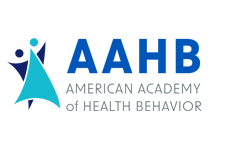Abstract
The purpose of this study was to evaluate differences in correlates of muscle-strengthening physical activity (PA) between those meeting and not meeting aerobic PA guidelines. A sample of college students (n = 392) completed a survey measuring constructs from the reasoned action approach for muscle-strengthening PA. Overall, 56% (n = 220) met the aerobic PA recommendations, and 25% (n = 99) met the muscle-strengthening PA recommendations. The mean age of participants was 19.9 years (± 1.76) (meeting aerobic PA = 20.0 years old ± 1.73; not meeting aerobic PA = 19.8 years old ± 1.79), and there were no differences between race or class standing between groups [a majority of the sample identified as white/Caucasian (83.4%; n = 327) and female (69.4%; n = 272)]. Separate linear regression models were created for college students meeting and not meeting aerobic PA guidelines. College students meeting aerobic guidelines (n = 220) reported significantly more muscle-strengthening PA (m = 2.89 days ± 2.0) than students not meeting guidelines (n = 172) (m = 2.06 days ± 1.9) (p < 0.001; d = 0.42). Regression models showed that attitudes, perceived norms, and perceived behavioral control (PBC) explained a substantial amount of the variance of intentions for both groups [meeting (45.5%); not meeting (59.7%)], however PBC moderated the relationship between intentions and muscle-strengthening PA for those not meeting aerobic recommendations. Results demonstrate that there are different correlates for muscle-strengthening PA, based on participation in aerobic PA, which translates to a need for different intervention approaches and strategies for both groups.
Creative Commons License

This work is licensed under a Creative Commons Attribution-Noncommercial 4.0 License
Recommended Citation
McGaughey, Anthony; Andrews, Victor; Sartor, Jason T.; Fairchild Saidi, Grace; Heinrich, Katie M.; and Branscum, Paul
(2021)
"Aerobic Physical Activity Participation and Correlates of Participating in Muscle Strengthening Physical Activity: A Cross-Sectional Analysis,"
Health Behavior Research:
Vol. 4:
No.
1.
https://doi.org/10.4148/2572-1836.1083
Included in
Cognition and Perception Commons, Health Psychology Commons, Social Psychology Commons, Sports Studies Commons, Theory and Philosophy Commons




